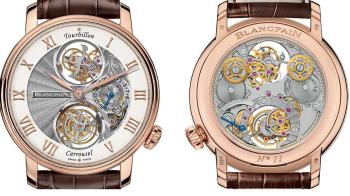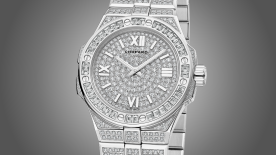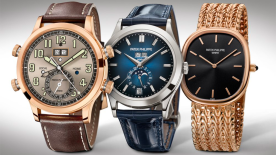Technical watch pop quiz! And because we’re in a good mood today, it’s a multiple-choice question. You’re welcome!
Q: What’s the difference between a tourbillon and a karrusel?
a) A tourbillon rotates co-axially with its balance; a karrusel does not.
b) A tourbillon makes one rotation per minute; a karrusel does not.
c) A tourbillon incorporates a fixed train wheel; a karrusel does not.
d) A tourbillon uses standard balance frequencies (e.g. 3Hz or 4Hz); a karrusel does not.
This is not a trick question. There is only one correct answer among the options given above. The other three are commonly held misconceptions — amongst those who have actually heard of these two horological mechanisms, I mean. In context of the general population, you’d be lucky to come across one person in a hundred who’s actually heard of the word “tourbillon”, let alone “karrusel”. Having any kind of notions about them, misconceived or otherwise, is something we can expect only of the tiniest fraction of people out there.
The correct answer, by the way, is option C. And there is one watch in modern horology that not only demonstrates the truth of this statement, but is also a clear refutation of options A, B and D. It is, of course the Blancpain Villeret Tourbillon Carrousel (we’ll be using Blancpain’s variant spelling of “karrusel” from now on, since we’re looking at their watch as a case study).
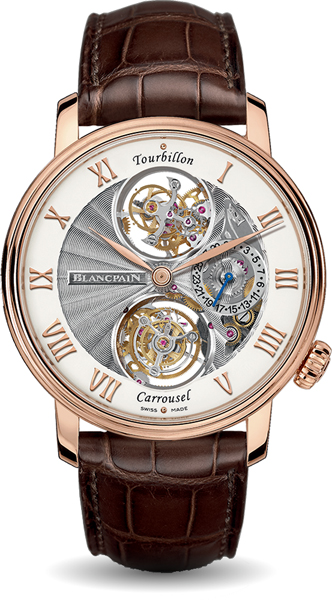
The classicism of this timepiece is a treat for the eyes — that chapter ring of grand feu enamel surrounding a guilloché dial, Roman numerals, subtly curved polished leaf-shaped hands and refined rose-gold case. However, we might almost argue that this very classicism does the in-house tourbillon carrousel calibre 2322 a disservice, because a revolutionary interior merits an equally revolutionary exterior. In this sense, the most impactful incarnation of this unique mechanism would certainly be the Blancpain L-Evolution Tourbillon Carrousel, with its rugged lines and inexorably tough design, asymmetrically openworked sablé bridges and jagged numerals that look like they were blasted out of rock by a lightning strike.
That said, for those who enjoy the juxtaposition — taken to the extreme — of a powerhouse movement against a supremely elegant case and dial, the Villeret model is your Holy Grail. After all, taken from another perspective, the refinement of the design actually emphasises the technical strength of the watch, by focusing all the attention on the two whirling mechanisms that punctuate the dial.
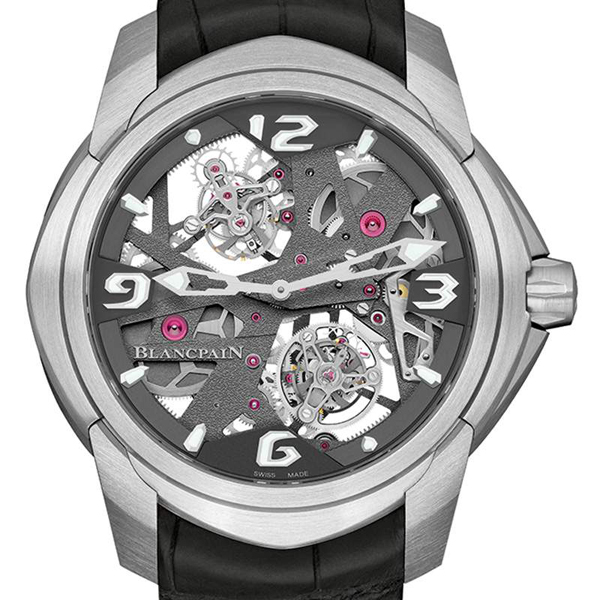
So, let’s start by examining the correct answer to the opening question, that the one criterion separating the tourbillon from the carrousel is the presence of a fixed train wheel in its mechanism. This is basically the litmus test, and it’s not only the most definitive, it’s also the easiest to identify — you can immediately pick it out with your eyes within a few seconds.
Here’s the explanation behind it. The tourbillon and carrousel both perform the same function, which is to say they rotate the regulating organ in order to obtain an averaged chronometric result in all vertical positions for the period of rotation, either positive or negative, which can then be compensated with one single adjustment. (That’s already a massively simplified summary of what actually happens, by the way.) How they achieve said rotation, however, differs completely in execution.
In the tourbillon, the rotating cage is driven (either via a coaxial pinion, in the traditional construction, or at the periphery, in the configuration seen more frequently in modern tourbillons) directly by the going train. The escape wheel, mounted on the tourbillon cage, is geared to the fixed wheel, from which it recoups the energy required to impulse the balance. Without the fixed wheel, the escape wheel is cut off from the train of energy; so is the balance. Without the action of these two components, the energy from the mainspring is released without regulation and the entire movement loses its timekeeping ability. With a fixed wheel, the tourbillon mechanism is able to function with one direct line of torque from barrel to balance.

In the carrousel, the line of torque bifurcates, driving the rotating cage and the escapement separately. If trying to comprehend the mechanical workings of the tourbillon is already enough to give you a migraine, you’re not going to appreciate what the carrousel does to your powers of spatial reasoning. At least the tourbillon is mathematically straightforward. Calculating carrousel gear ratios has the same difficulty level as the kind of insane combination gymnastics/juggling act that makes high-school kids immediately go viral on TikTok.
This is how the carrousel works. You ready? A balance and escapement control the rate at which energy is released from the barrel. So far, so good. Just like any normal movement. However, the escapement is mounted on a rotating carriage. The rotating carriage is driven by an intermediate wheel that branches off from the main gear train, which we’ve already established is releasing energy at a rate controlled by the balance and escapement. (If you’re starting to experience a sinking feeling in your stomach, don’t worry — it’s normal.) The gear ratios of every single wheel in this system need to be such that the differential between the rate of rotation of the cage and the rate of rotation of the seconds wheel is at the exact point which will effectuate the necessary energy transfer to the balance, which will simultaneously allow the motion works to rotate at a rate that leads to a display of standard units of time.
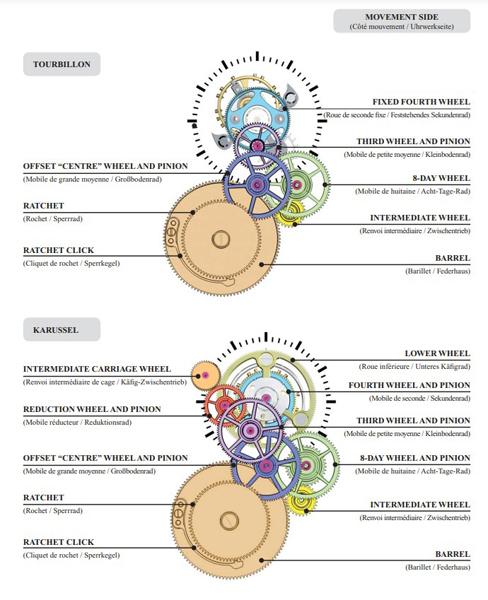
For the observer, the carrousel is a beautiful horological ballet of wheels and pinions. For the watchmaker, the carrousel is a masochistic vaudeville of hellish proportions. It is like dating two models who also happen to be best friends, without letting them find out about each other. It is like Jenga, but with running chainsaws. This is why myths persist about carrousels and co-axial rotation and period of rotation and specific balance frequencies. Watchmakers would finally get their carrousels to work, and they would then immediately cease interfering any further with them, for fear of messing the whole thing up and inadvertently getting a chainsaw across the face. Whatever configuration the carrousel ended up using, whatever nonsensical rotational period they got, whatever frequency they landed on, as long as it worked, that was it. Job done. The inventor of the carrousel, Bahne Bonniksen, used carrousel rotational speeds of between 30 to 50 minutes, and pretty much just said, “Ok cool. That’s good enough for me.”
Now that we all have an adequately serious understanding of how difficult it is to get a carrousel just right, allow me to draw your attention again to the Blancpain Villeret Tourbillon Carrousel, whose carrousel rotates once per minute, co-axial with its balance, and oscillates at the rate of 3Hz (21,600vph). The perfect refutation of every carrousel myth circulating out there. You should think about buying one. Even if you have the bank balance of a university student subsisting on Lidl frozen pizza, it’s still a lot of fun to think about owning a Blancpain Villeret Tourbillon Carrousel.

So the next time someone tries to tell you some BS about what a carrousel or tourbillon is (or isn’t), you’ll be well prepared. You don’t even have to memorise all the mind-numbing technical stuff above. Just look for that fixed wheel. Congratulations! You now know something that puts you in the top 5 percent of watch experts. Again, you’re welcome. (Here at WorldTempus, we accept expressions of gratitude in the form of chocolates. Just not the ones from Lidl.)
